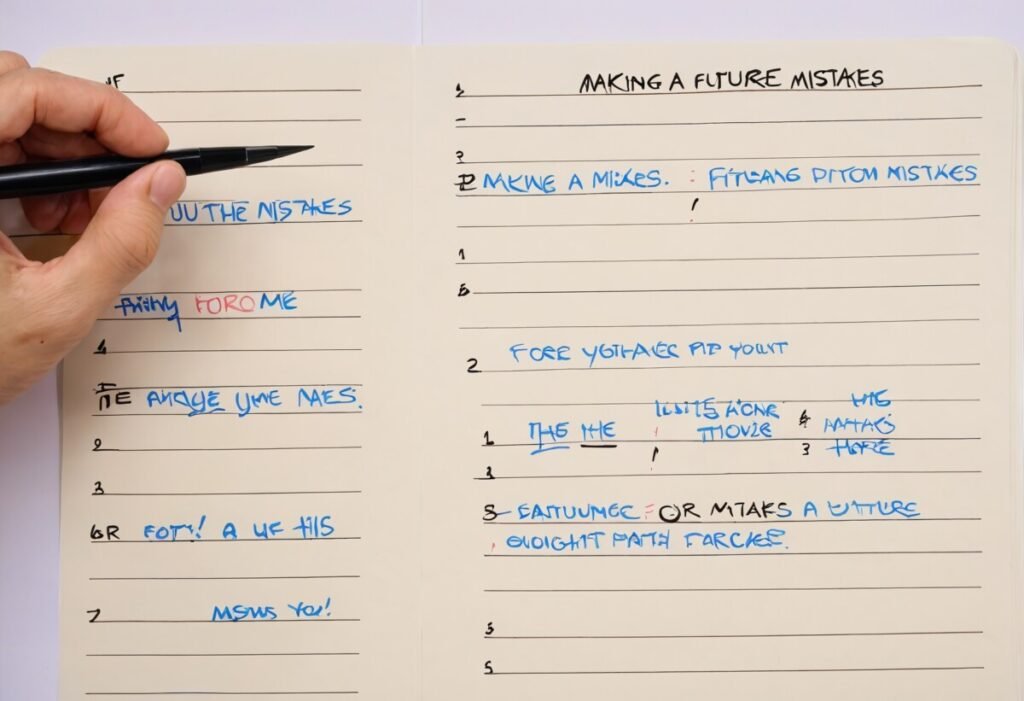How Long Ago Was 1919 Ai
1. Presentation to Botch Hangovers
Mistakes are an inescapable portion of being human. Whether it’s saying the off-base thing in a discussion, making a blunder on an extent at work, or falling flat to meet our possess desires, botches happen. What frequently waits after these botches, in spite of the fact that, is the enthusiastic and mental aftermath — what Shannon Kaiser suitably alludes to as a “botch aftereffect.” Much like a physical headache, these enthusiastic aftereffects deplete our vitality, cloud our thinking, and keep us stuck in the past.
A botch headache happens when the passionate effect of a botch — blame, lament, or disgrace — proceeds to influence us long after the occasion itself has passed. Instead of moving forward, we discover ourselves replaying the botch in our minds, criticizing ourselves, and battling to let go. It’s not fair the botch itself that holds us back; it’s the passionate weight we join to it. This article, motivated by Shannon Kaiser’s compassionate approach, will investigate why we involve botch headaches and offer commonsense methodologies to maintain a strategic distance from or recuperate from them.
2. Understanding the Enthusiastic Weight of Mistakes
Mistakes, in spite of the fact that frequently straightforward in nature, carry critical passionate weight. This is because they can trigger a run of negative feelings, from blame and disgrace to fear and lament. These feelings are effective and, if not tended to, can make a botch aftereffect that waits long after the occasion itself has passed.
Blame is a feeling that emerges when we feel that we’ve done something off-base. It can be valuable when it prompts us to make corrections or learn from our botches. Be that as it may, blame can end up dangerous if it leads to intemperate self-blame or staying in the past.
Disgrace goes more profound than blame. Whereas blame makes us feel terrible about something we did, disgrace makes us feel terrible about who we are. It can be an overpowering feeling, persuading us that we are imperfect or unworthy because of our botches. This is especially hurtful since it ties our self-worth to our failures.
Lament is the feeling of wishing we had done something in an unexpected way. It keeps us stuck in the past, replaying what may have been. This centre on “what if” scenarios can prevent us from tolerating the show and moving forward.
Understanding these enthusiastic reactions is significant to breaking free from the cycle of botch aftereffects. When we permit feelings like blame, disgrace, and lament to take over, they shape our character and recognition of ourselves. It’s critical to recognize that whereas botches are a portion of life, they don’t characterize who we are.
3. The Science of Letting Go: Why It’s So Hard

Letting go of a botch is less demanding said than done. From a mental point of view, our brains are wired to centre on negative encounters more than positive ones. This is known as the cynicism inclination, a marvel that causes us to provide more weight to disappointments, mishaps, and botches than to victories. Developmentally, this predisposition made a difference in our predecessor’s survival by centring on potential dangers, but in advanced life, it can cause us to focus on botches long after they’ve passed.
When we make a botch, the brain tends to ruminate on it, replaying the occasion over and over in an endeavour to prevent it from happening once more. This is a defence component, but it frequently leads to overthinking and passionate trouble. Our brain’s craving to maintain a strategic distance from future botches can make it troublesome to discharge the past.
Additionally, numerous of us stand up to letting go of botches because of the fear of redundancy. We accept that if we don’t fixate over what went off-base, we’ll make the same botch once more. This fear keeps us stuck in a cycle of rumination, uneasiness, and self-criticism.
Perfectionism moreover plays a part in our failure to let go. In a society that frequently likens victory to flawlessness, we feel the weight to maintain a strategic distance from botches at all costs. When we do slip up, it feels like an individual disappointment or maybe a common portion of life. Letting go requires us to acknowledge that botches are unavoidable, and this can be troublesome when we’ve been conditioned to endeavour for perfection.
4. Reframing Botches: Turning Lament into Growth
Mistakes don’t have to be negative encounters. In truth, they can serve as important openings for development, if we learn how to reframe them. Reframing implies changing how we think almost botches, seeing them not as disappointments, but as lessons that can offer assistance to us to progress and grow.
One way to reframe botches is to receive a development mentality. A development mentality, a term popularized by analyst Carol Dweck, is the conviction that capacities and insights can be created through exertion and learning. With a development attitude, we see botches as a portion of the learning preparation. Instead of considering, “I failed,” we think, “I learned something valuable.” This move in point of view permits us to move past lament and centre on individual development.
Here’s how to reframe a mistake:
1. Recognize the lesson: Each botch has a lesson. Reflect on what went off-base and what you can learn from it. In case, you made a blunder at work, inquire yourself how you can progress your consideration to detail in the future.

2. Center on development: Instead of staying on the botch, centre on how you can utilize the encounter to develop. What modern aptitudes or information did the botch offer assistance you acquire?
3. Celebrate advance: Botches are a sign that you’re attempting, learning, and moving forward. Celebrate the reality that you’re taking dangers and learning from the outcomes.
Many fruitful people credit their botches with making a difference them accomplishing enormity. By reframing botches as learning encounters, you can turn lament into development and move forward with more prominent confidence.
5. Practicing Self-Compassion

At the centre of Shannon Kaiser’s approach to dodging botch aftereffects is self-compassion. When we make a botch, it’s simple to end up with our claim harshest pundit. Be that as it may, this self-criticism as it were develops sentiments of disgrace and lament, making it harder to move on. Practising self-compassion implies treating yourself with the same thoughtfulness and understanding you would offer to a near friend.
Self-compassion includes three key elements:
Self-kindness: This implies being delicate with yourself when you make a botch, or maybe beating yourself up. Recognize that you’re human and that everybody makes mistakes.
Common humankind: Keep in mind that botches are an all-inclusive encounter. You are not alone in your battles. Recognizing that others confront comparable challenges can diminish sentiments of confinement and shame.
Mindfulness: Hone mindfulness by recognizing your feelings without letting them overpower you. Instead of getting misplaced in lament, watch your sentiments with interest and compassion.
Here are a few viable ways to develop self-compassion:
Compose a self-compassionate letter: When you’re feeling overpowered by a botch, compose yourself a letter as if you were composing to a near companion. Offer words of support, understanding, and support.
Hone positive self-talk: Supplant unforgiving, self-critical considerations with kind and empowering ones. For illustration, instead of saying, “I’m such a failure,” attempt, “I’m learning from this involvement, and I’ll do way better another time.”
Take time to handle: Permit yourself time to handle the botch without hurrying to judgment. Provide yourself consent to recuperate and reflect some time recently moving on.
By practising self-compassion, you make the passionate space required to recuperate from botches and prevent them from turning into long-lasting hangovers.
6. Breaking Free from the Winding of Overthinking

Overthinking is one of the fundamental guilty parties behind botch aftereffects. When we make a botch, it’s common to reflect on what went off-base. Be that as it may, when reflection turns into rumination, we conclusion up stuck in a circle of negative considerations, replaying the botch over and over once more in our minds. This winding of overthinking can lead to expanded uneasiness, misery, and a drawn-out sense of regret.
To break free from overthinking, it’s critical to create procedures that offer assistance you hinder negative thought designs. Here are a few strategies:
Thought-stopping method: When you capture yourself ruminating, deliberately tell yourself to halt. At that point, divert your centre to something positive or lock-in. This seems to be an action you appreciate, such as perusing, strolling, or working on a hobby.
Mindfulness: Practicing mindfulness can offer assistance in you remaining grounded in the show minute, or maybe getting misplaced in considerations around the past. Mindfulness includes paying consideration to your current involvement without judgment. You can hone mindfulness through reflection, profound breathing works out, or essentially by centring on your faculties at the moment.
Appreciation hone: Moving your center to appreciation can offer assistance check negative contemplations. When you discover yourself overthinking, take a minute to reflect on what you’re thankful for in your life. This seems to be as basic as increasing in value on a sunny day or being grateful for a steady friend.
Breaking the cycle of overthinking requires persistence and hone, but over time, these methods can offer assistance you recapture control over your contemplations and avoid botch headaches from taking root.
7. Setting Solid Boundaries with Yourself

Setting solid boundaries with yourself is key to dodging botch headaches. Whereas it’s imperative to hold yourself responsible for your activities, it’s similarly vital to dodge falling into designs of over-the-top self-criticism. Responsibility and self-compassion must coexist in arrange for genuine recuperating to occur.
One way to set sound boundaries is to restrain the sum of time you spend reflecting on a botch. Reflection is important, but staying in the
past for as well long can be hurtful. Grant yourself a set sum of time to think approximately the botch — maybe 10 or 15 minutes. After that, commit to letting it go and moving on.
Another vital boundary is to dodge utilizing negative self-talk. Supplant expressions like “I continuously mess up” with more useful articulations, such as “I made a botch, but I’m learning from it.” This move in dialect can offer assistance you dodge spiralling into self-blame and shame.
It’s moreover accommodating to set boundaries around how you prepare input from others. Whereas it’s vital to take obligation for your activities, it’s similarly critical to maintain a strategic distance from letting others’ feedback characterize your self-worth. Hone observing between useful input that makes a difference in your development and feedback that as it were serves to tear you down.
8. Making a Arrange for Future Mistakes
One of the best ways to dodge botch headaches is to have an arrangement for how you will handle future botches. Botches are inescapable, but they don’t have to lead to long-lasting enthusiastic aftermath. By planning yourself in progress, you can react to botches in a solid and useful way.
Here’s a basic arrangement for dealing with future mistakes:
1. Recognize the botch: Acknowledge that you made a mistake without judgment. Botches are a portion of life, and they don’t characterize you as a person.
2. Reflect on the botch: Take time to think about what went off-base and why. What components contributed to the botch? What seem you do in an unexpected way following time?
3. Learn from the involvement: Extricate the lessons from the botch and centre on how you can develop from it. How will this encounter offer assistance to your progress in the future?
4. Let go of the enthusiastic weight: Once you’ve reflected and learned from the botch, make a cognizant exertion to discharge the passionate burden. Remind yourself that it’s affirming to make botches and that you’re moving forward with unused insights.
Having a arrange in put can diminish the uneasiness and push that frequently go with botches. It permits you to approach mistakes with a proactive attitude, turning botches into openings for development or maybe then sources of shame.
9. Day-by-day Propensities to Discharge Regret
Avoiding botch headaches isn’t fair around tending to botches when they happen; it’s moreover around developing every day propensities that offer the assistance you discharge lament and keep up passionate well-being. Shannon Kaiser emphasizes the significance of consolidating self-care hones into your day-by-day schedule to construct versatility and prevent lament from taking root.
Some supportive day-by-day propensities include:
Journaling: Composing around your contemplations and sentiments can be a capable way to handle feelings and pick up clarity on your encounters. When you make a botch, journaling can offer assistance you reflect on the lessons learned and discharge any waiting regret.
Appreciation hone: As said prior, centring on appreciation can move your consideration absent from past botches and toward the positive perspectives of your life. Attempt composing down three things you’re thankful for each day to develop a sense of appreciation and diminish the centre of regrets.
Careful reflection: Taking time each day to hone mindfulness can offer assistance you remaining grounded in the show minute and diminish overthinking. Indeed fair a few minutes of profound breathing or reflection can offer assistance calm your intellect and avoiding botch hangovers.
These day-by-day hones offer assistance to construct passionate versatility, permitting you to handle botches with more noteworthy ease and move forward without being weighed down by regret.
10. Conclusion: Grasping Imperfection
At the heart of dodging botch aftereffects is the capacity to grasp blemish. Botches are an unavoidable portion of life, but they do not characterize us. Shannon Kaiser reminds us that genuine development comes from tolerating our flaws and learning from our encounters. Life is not almost being idealised — it’s almost being genuine, bona fide, and willing to develop through challenges.
By practising self-compassion, breaking free from overthinking, and embracing every day propensities that advance passionate well-being, you can dodge the waiting impacts of botch headaches. Grasp your botches as openings for development, and keep in mind that you are commendable and able, indeed in your imperfections.
This article reflects Shannon Kaiser’s compassionate approach to overcoming botch aftereffects by giving viable devices and methodologies to turn lament into development. Through self-compassion, mindfulness, and proactive arranging, you can discharge the enthusiastic weight of botches and move forward with more prominent certainty and peace of intellect.
